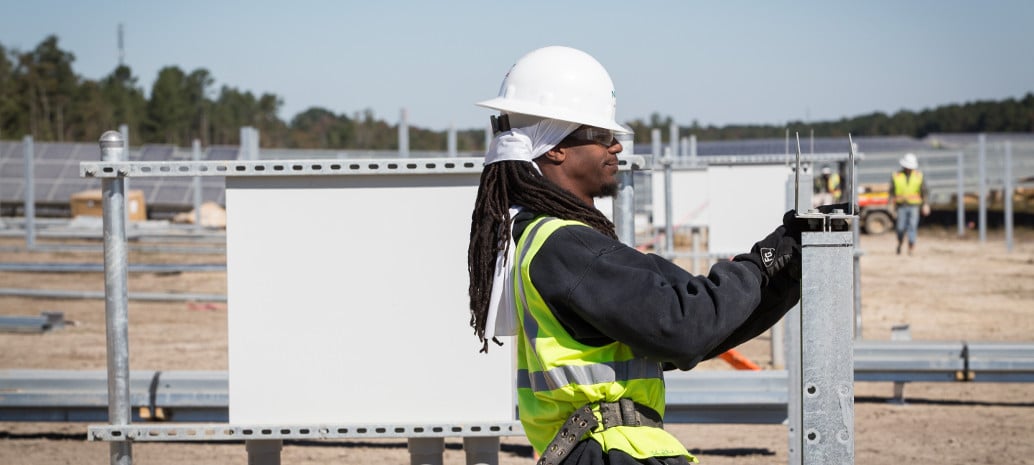Two reports released this week indicated many positive factors in the growth of solar and renewable energy in different parts of the U.S. One report described the growth of diversity in the labor force in California. The other proclaimed the overall growth of renewable energy including solar in various states in the Midwest.
One of the challenges of the growth of solar energy has been the need to assure that all demographic groups have access to the economic benefits of employment in the industry, as well as directly or indirectly benefitting from its cleaner, cheaper power. This has required special efforts to overcome the societal inertia of the preponderance of white males dominating employment, in this case installations, out of proportion to the available population.
California, the largest solar market in the U.S., has some of the most comprehensive data of labor metrics in the clean energy industries. Two sets of data were used by the University of California, Berkeley, Center For Labor Research and Education Green Economy Program determining equity in solar installation employment. One set was statewide employment data from the California Division of Apprenticeship Standards from 2002-2117, the other focused on 2 GW of large scale PV installations in Kern County from 2013-2017. Both looked at union electricians, iron workers and operating engineers.
The good news was that people of color (POC) goals were generally reached in these categories, attaining 60% of the solar workforce as opposed to 56% of the state workforce as a whole. Latinos made the most progress due to their preponderance of numbers, with African Americans reaching goals approximating and military veterans exceeding their overall workforce population. The main drawback has been the continued vast underrepresentation of women in the construction workforce, remaining in the low single digit percentages despite being nearly half the state workforce. Other groups such as Asian-Pacific and Native Americans also remain underrepresented.
The primary method by labor unions in creating pathways for these disadvantaged groups has been partnerships with secondary education institutions as well as organizations that work with those outside of schools. There were two main tracks that enabled hiring to be improved beyond the rigid and often exclusionary practices of the building trades. The first track was new classifications of workers that were created which fast tracked disadvantaged people into mainstream employment. The second track was due to official discouragement or not allowing race based hiring standards. Instead, generic standards of low income, formerly incarcerated, low education, veteran status and preference for women were employed.
Meanwhile, the solid but never stolid Midwest has more good news about the growth of renewable energy jobs in the region. Clean Energy Trust and Environmental Entrepreneurs issued a “Clean Jobs Midwest” report for the 12-state heartland of Illinois, Indiana, Iowa, Kansas, Michigan, Minnesota, Nebraska, North Dakota, Ohio, South Dakota and Wisconsin. Almost 600,000 jobs in energy efficiency, renewable energy, electric vehicle and related industries were reported in 2016, a 5% increase from 2015, and a job creation rate 5 times faster than the overall economy. Solar jobs in the region were reported at 36,654 people employed. This growth continues despite increasing clouds of potential hostility from federal and some state and local sources.
The leading state employer of these industries is Illinois, at 119,395 jobs. The solar jobs leader is Ohio at 8,718, followed by Michigan (5,672), Illinois (4,835) and Wisconsin (4,207), with four other states having at least 2,000 people employed. The report features a wealth of details from personal stories to statistical data on an interactive map broken down into legislative districts for your analyzing and advocacy enjoyment.
This content is protected by copyright and may not be reused. If you want to cooperate with us and would like to reuse some of our content, please contact: editors@pv-magazine.com.








By submitting this form you agree to pv magazine using your data for the purposes of publishing your comment.
Your personal data will only be disclosed or otherwise transmitted to third parties for the purposes of spam filtering or if this is necessary for technical maintenance of the website. Any other transfer to third parties will not take place unless this is justified on the basis of applicable data protection regulations or if pv magazine is legally obliged to do so.
You may revoke this consent at any time with effect for the future, in which case your personal data will be deleted immediately. Otherwise, your data will be deleted if pv magazine has processed your request or the purpose of data storage is fulfilled.
Further information on data privacy can be found in our Data Protection Policy.